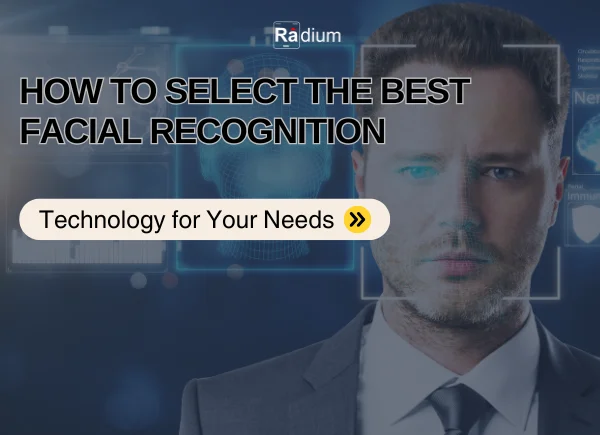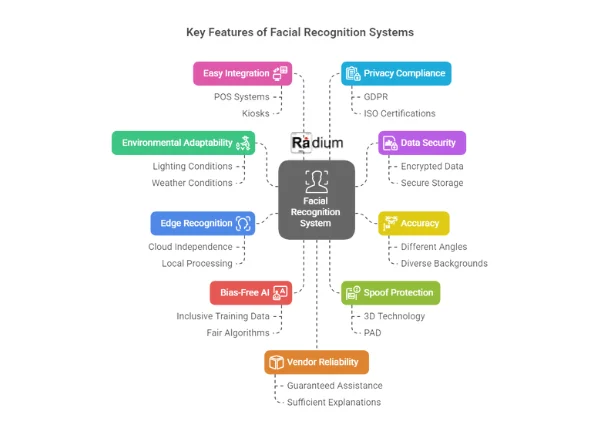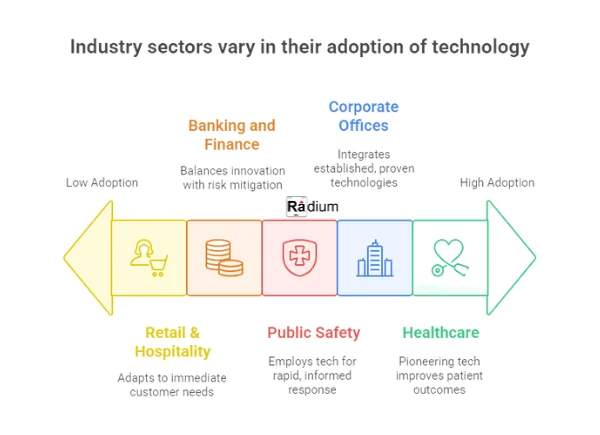
Facial recognition is no longer just science fiction—it is now helping to change the way we use digital and physical services. Biometrics is changing the way banking, retail, healthcare and public safety work by making phones easy to unlock and streamlining airport safety. But if you’re considering facial recognition for your organization, you should know that the quality of systems can differ.
How good your facial recognition system is will largely depend on the camera you are using. How well a facial recognition camera works can decide if operations run smoothly or if problems arise with false alarms or security faults. In this blog, we will go through the key questions you should ask and the important factors to consider to get the perfect facial recognition system for you.
AI systems usually attract attention, but it is also the hardware such as the image capture system, that greatly contributes. If the camera’s quality is poor, recognition will be less accurate due to low-resolution or distorted images. So, detection takes more time, fake rejections can happen or people might even get in without permission.
When it comes to installing facial recognition, be it for a secure building or a retail place popular with customers, you must choose a solution that guarantees speed, accuracy and safety in all places and with different kinds of people.
When using facial recognition, you should first determine what its main purpose will be—security, access control, improving customer service, managing employee hours or law enforcement. For each of these purposes, you would need a different setup and features. Such systems may be used differently in corporate offices compared to airports or police facilities due to their unique functions.
It is also important to think about the scale such as how many users there will be, the locations involved and how many connections are needed with HRMS, ERP and security systems. To implement the technology on a large scale, it should have devices and software capable of processing a lot of data and working smoothly with existing digital systems.
You should also keep in mind the compliance rules and privacy laws that affect your industry. For instance, educational institutions, government agencies and healthcare providers all have their own ways of handling biometrics and the legislation they must stick to.
Radium FaceBox provides an advanced AI-based facial recognition solution for organizations requiring dependability. The Radium FaceBox AI-Based Face and RFID Card Non-Aadhaar Attendance System is developed to address current attendance and access control needs without using Aadhaar. The FaceBox F1, FaceBox F2 and FaceBox F3 are all packed with advanced facial recognition, fingerprint scanning, live body detection and multimodal identification features. They come with strong Linux and Android OS systems, along with a clear touchscreen for simple operation.
FaceBox is suitable for airports, offices, schools, apartment blocks and other places that need accurate and secure identification and control. Those who do not have Aadhaar set up can use such devices for swift, convenient and reliable biometric functions in the private or public sector.
If you use Radium FaceBox and analyze the requirements for the number of faces to scan and any legislation, you can make sure your facial recognition implementation is both effective and future-ready.

Start by analyzing certain main characteristics of the system to find the perfect match for your organization.
1. Can it provide correct images in a variety of light situations?
The accuracy of facial recognition changes a lot depending on the lighting. Get a camera that functions smoothly when it’s dark, bright and everything in between. Having IR or dual cameras allows the device to capture faces clearly even when the light is not good.
2. Can you use it in places where there are lots of people?
When you’re in places like airports, malls or stadiums, your system should be equipped to identify and handle several faces at once. Choose for technology that can both search thousands of faces and deliver results instantly.
3. Is there technology to prevent spoofing?
Fake photos and videos threaten the use of face technology as an access measurement. Choose a system that uses 3D mapping, liveness detection and motion analysis to detect pitfalls in biometrics such as presentation attacks.
4. Does it succeed in addressing different communities?
It is important that a facial recognition system operates properly for people of all ages, genders and ethnicity. Find suppliers that concentrate on removing bias and run their algorithms on a range of diverse examples.
5. How do they guarantee cybersecurity?
Facial data needs to be carefully protected. Confirm that the system encrypts information whether it is traveling or stored. Your system must be secured by end-to-end encryption and meet standards such as GDPR.
6. How wide is the view you get?
A distortion-free camera that’s set to portrait orientation helps people of all heights remain clear in the picture. You should aim to avoid fish-eye distortion when you use wide-angle lenses.
7. Is it possible to connect it to current systems?
The camera needs to be compatible with your existing systems of kiosks, ATMs, security turnstiles or time attendance machines.
8. Does it allow for processing data at the edge?
Edge computing enables data to be worked on right on the device, helping to make it faster and less delayed. Because it doesn’t rely so heavily on external servers, it increases the system’s security.
9. Was the solution approved and made to meet all requirements?
Check if the device has ISO 30107-3 (anti-spoofing) certification, as well as CE, FCC and other necessary certifications. If your system meets the rules and regulations, it is called compliant.
10. Does the vendor have a positive and experienced reputation?
You can’t simply add facial recognition and expect it to work right away. Go with a vendor that provides reliable tech support, regular software updates and a track record of use in different industries.
The choice can be simpler, so we’ve included a list of common features with high-performance systems:
Ideal for All Lighting and Weather: You can use this camera in dark and stormy conditions, either indoors or outdoors.
Encrypted Data Transmission: Encrypted Data is used for data exchanged and stored.
Real-World Accuracy:The ability to record at different angles, under different light and across different backgrounds.
Without Distortion: You get good portraits for fast recognition.
Recognition on the Edge: Recognize data without needing the cloud all the time.
Bias-Free AI: The training data did not contain bias, so the model is inclusive.
Spoof Protection: Uses 3D technology and PAD to keep fraud from happening.
Easy Integration: It is easy to integrate with main systems in retail such as POS, kiosks and e-gates.
Following Privacy Regulations: GDPR, various ISO certifications and national data legislation.
Reliability of Vendors: Guaranteed assistance and sufficient explanations are provided.

Choosing Based on Your Industry
Every industry has its own set of necessary skills. We will briefly explain how facial recognition varies in different kinds of
1. Retail & Hospitality
The main goals are quick checkouts, custom experiences for each customer and reducing loss. There should be systems capable of enduring plenty of shoppers and connecting with POS equipment.
2. Banking and Finance
Being accurate and secure is very important. Any system you use should pass regulatory tests and provide multi-factor authentication.
3. Public Safety
Both law enforcement and border control require fast and multi-face recognition, no matter how many people are involved in a situation.
4. Corporate Offices
Access control systems should be an important part of the installation. It is essential that liveness detection and supporting many users are top concerns.
5. Healthcare
Thanks to facial recognition, patients don’t need to touch screens; equipment should meet HIPAA standards and be safely cleaned between uses.
Implementation Tips:
A good system can still run into problems if the deployment is not done well. If you want to maximize your return, follow these ideas:
Teach your team the basic rules of using the system and what to do if something goes wrong.
Ensure you put the system through real-life scenarios by using simulations with high traffic flow during testing.
Update programs whenever an update becomes available to protect your system and improve it.
Don’t rely only on your password-based system, as it may not be flawless, so back it up with other authentication methods.
With more and more people using facial recognition, issues about privacy are also on the rise. You should make your policies straightforward, get permission from users if required and remove their personal data after it is no longer needed. A proper vendor will make sure you follow legal and ethical guidelines to earn trust from the public.
Final Thoughts: The Camera Is the Foundation
Let’s say your facial recognition system is like a building which begins with the camera as the foundation. Even the best AI algorithm won’t be able to achieve results unless it has data. Better image recognition, safety and a smooth process for people depend on using a high-quality image capture device.
When upgrading your safeguards, managing attendance or increasing customer satisfaction, suitable facial recognition technology can be a big help. By taking your time to check your choices, you’re moving toward a smarter and more secure future.
To understand more about selecting biometric tools and to review certified facial recognition products, check out our recommendations, click here to look for our Best Facial Recognition biometric device. We offer identity management systems that work within the Aadhaar ecosystem of India and worldwide.
